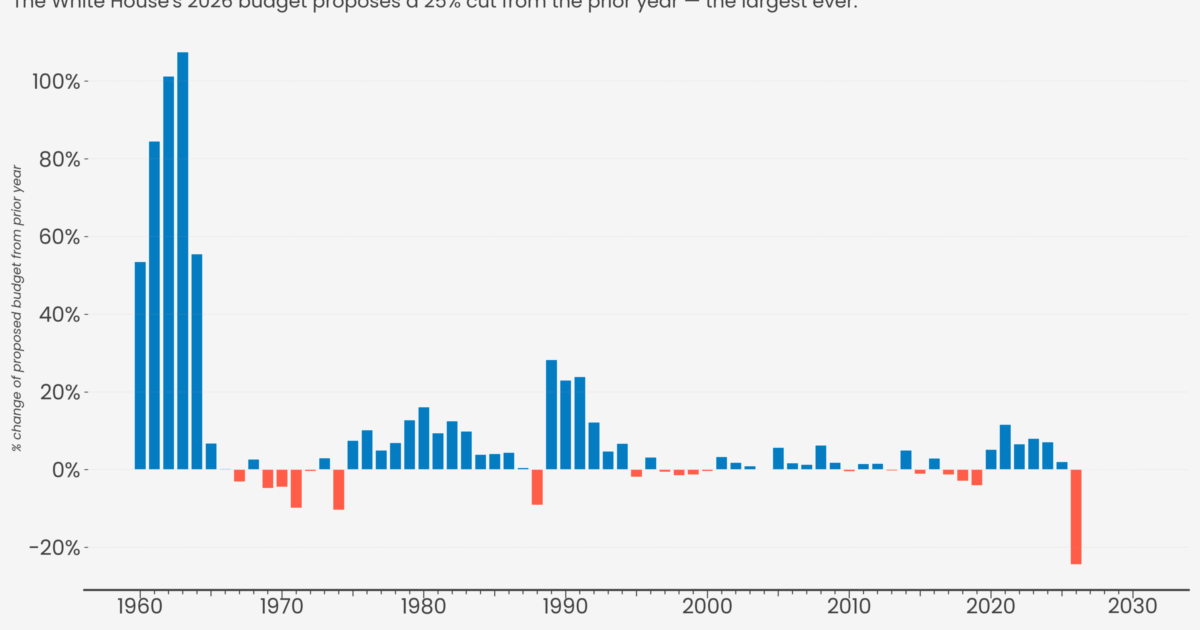- Get link
- X
- Other Apps
- Get link
- X
- Other Apps

NASA's 2026 Budget Proposal: A Historic Setback in Seven Charts
The White House's proposed fiscal year (FY) 2026 budget for NASA has ignited concerns across the space community, and for good reason. This isn't simply a minor adjustment; it represents a potentially crippling blow to the agency's ambitions and future endeavors. We're not exaggerating – the data paints a stark picture.
The proposed budget is the smallest NASA has seen since 1961. Let that sink in.
To truly grasp the magnitude of this proposed cut, let's travel back in time. Fiscal year 1961 was a vastly different era for space exploration. Consider these facts:
- No American astronaut had yet ventured into space.
- The Soviet Union hadn't yet launched a cosmonaut.
- Even Ham, the pioneering chimpanzee, hadn't yet made his historic flight.
- Project Mercury, the program that would eventually send seven astronauts on solo missions, was in its infancy.
- Planetary spacecraft, space telescopes, and Earth science missions were nonexistent concepts.
- The monumental Apollo lunar program was just a glimmer of an idea.
In essence, the proposed 2026 budget would place NASA at a funding level comparable to an era when space exploration was barely a concept.
Here's a breakdown of why this is so concerning, visualized (imagine seven charts highlighting these points would be embedded here):
- Historical Context: A chart comparing NASA's budget as a percentage of the federal budget from 1961 to 2026, clearly showing the dramatic decline.
- Inflation Adjusted Comparison: A comparison of NASA's 1961 budget with the proposed 2026 budget, both adjusted for inflation, further emphasizing the cut.
- Impact on Key Programs: A breakdown illustrating how specific NASA programs (e.g., Artemis, Earth Science, Planetary Science) would be affected by the budget cuts.
- International Standing: A comparison of NASA's budget with those of other major space agencies (e.g., ESA, China National Space Administration), potentially showing a decline in U.S. leadership.
- Economic Impact: A visualization of the potential job losses and economic consequences resulting from reduced NASA funding.
- Scientific Progress: A chart illustrating the potential slowdown in scientific discoveries and technological advancements due to the budget constraints.
- Public Opinion: Data reflecting public support for space exploration and the potential backlash against the budget cuts.
This proposal doesn't just affect NASA; it impacts the entire scientific community, the economy, and America's position as a leader in innovation and exploration. The ripple effects will be felt for decades to come.
This budget proposal raises serious questions about the nation's commitment to space exploration and scientific advancement. While fiscal responsibility is important, underfunding NASA at this critical juncture risks sacrificing long-term gains for short-term savings. It's crucial for policymakers to recognize the immense value that NASA brings to our society – not just in terms of scientific discoveries, but also in inspiring future generations and driving technological progress.
Let's hope that thoughtful consideration and informed debate will lead to a more sustainable and ambitious path forward for NASA, ensuring that the agency can continue to push the boundaries of human knowledge and exploration.
Source: https://www.planetary.org/articles/nasa-2026-budget-proposal-in-charts
Apollo
budget cuts
funding
FY2026
NASA
Project Mercury
space agency
Space exploration
space program
White House
- Get link
- X
- Other Apps
Comments
Post a Comment